
Article contents

The best way to top up your pension for retirement is normally to start a personal pension. That way, you’ll be able to choose a pension provider with low fees that has a great track record for growing money quickly!
Keen to top up your pension? Good for you! By paying more into your pension now, you’ll be making sure you’re more financially secure in your golden years.
But how do you top up your pension? Here, we’ll look at how to top up your State, personal and workplace pensions – and what the best way to go about it is. Here goes!
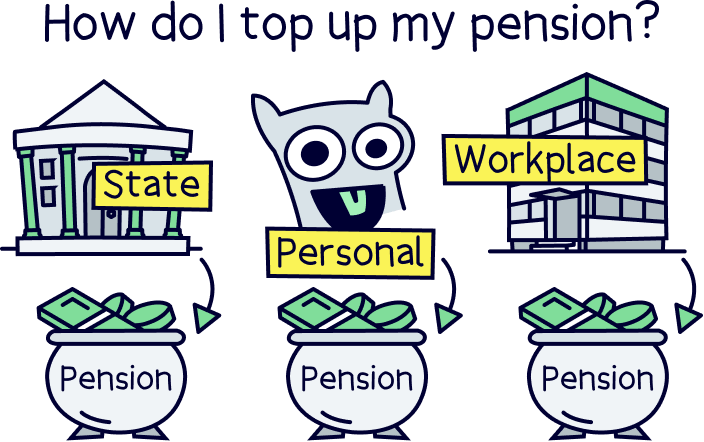
First things first, you might be wondering how to top up your State Pension.
The State Pension is a weekly payment you’ll probably be able to get from the government once you reach State Pension age – that’s currently 66 but gradually climbing to 68.
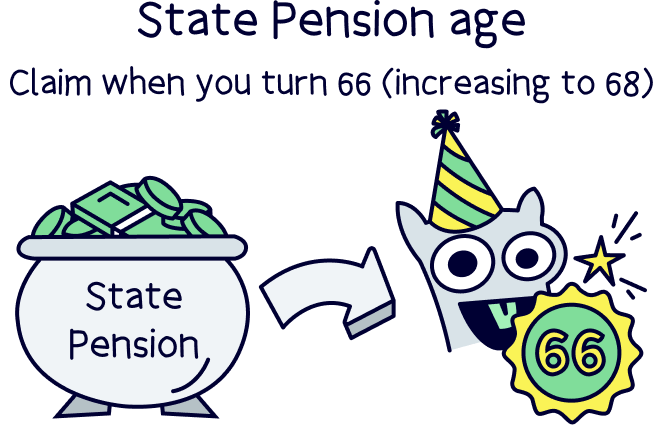
The full new State Pension (meaning the maximum you can get) is £230.25 per week. That comes to £11,973 per year. So, the chances are you might struggle to live on the State Pension by itself (although it’s definitely nice to have!).
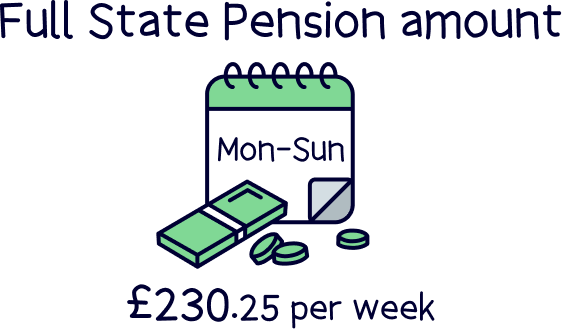
Don’t worry though, there are a few ways that you can top up your State Pension.
Okay, so to get the full State Pension, you’ll need to have paid National Insurance for at least 35 years (National Insurance is a payment you make to the government alongside your taxes).
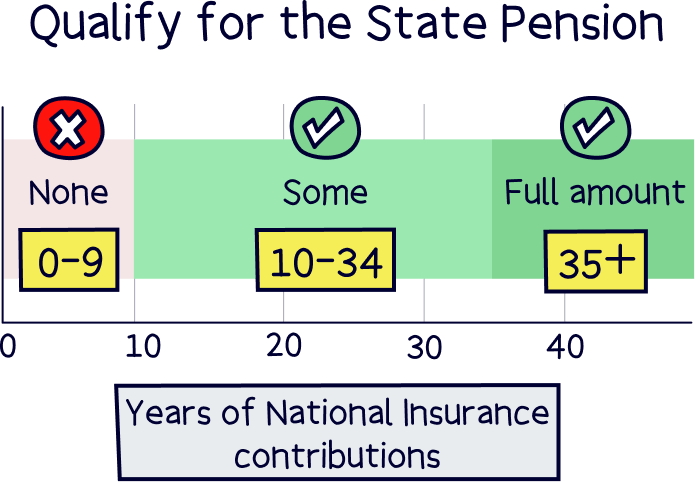
If you work your whole working life, the chances are you’ll tick that box no problem. After all, most people have to pay National Insurance. However, if you earn very little or you don’t work at all, you might not have to pay it – which is good news in some ways, but bad news when it comes to retirement as the less years you’ve paid National Insurance, the less State Pension you’ll get.
Paid National Insurance for less than 10 years? Then we hate to be the bearers of bad news, but you won’t qualify for the State Pension at all.
But don’t despair! You can top up the amount of State Pension you’re entitled to, by making voluntary National Insurance contributions – in other words, by choosing to pay National Insurance even though you don’t legally have to. In fact, you can normally make voluntary National Insurance contributions for the last 6 years.
We know, we know, paying things that you don’t have to doesn’t sound like fun. But if you’re a few years off from qualifying for the full State Pension, or a few years off from qualifying for any State Pension at all, making voluntary contributions is a great way to up your earnings during retirement (if you can afford to, of course!). You’ll definitely thank yourself later!
Not sure how many qualifying years you have under your belt? You can check the government’s State Pension forecast tool on GOV.UK.
If you want to make a voluntary National Insurance contribution, head over to the Voluntary National Insurance page on the government website.
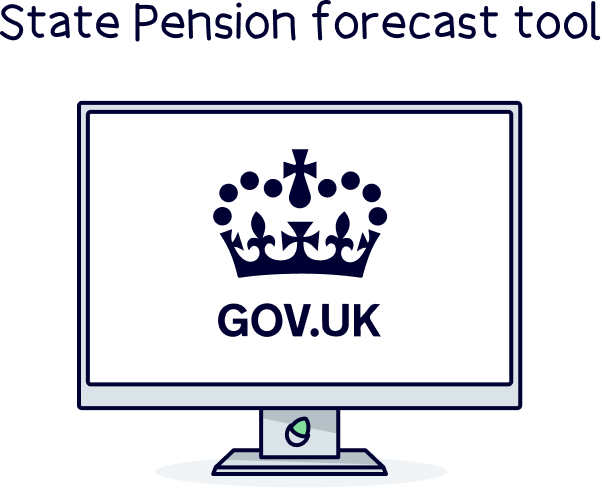
Another good way of topping up your State Pension is to delay taking it, known as ‘deferring’ it. Yep, by biding your time for a bit and not taking your State Pension as soon as you’re entitled to it, you’ll be able to claim more when you eventually do get your hands on that lovely weekly payment. Hooray!
As long as you delay taking it for at least 9 weeks, your State Pension will increase for every week you defer it – although exactly how much it increases by will depend on lots of different things, like how long you defer it for and what year you reach State Pension age.
It’s worth noting that retirement age and State Pension age are two completely different things. You can claim the State Pension once you reach State Pension age (currently 66), regardless of whether you’re still working or not. This means that deferring the State Pension can be particularly handy for people who are still working when they hit State Pension age – after all, if you don’t need those weekly payments straight away, it might well be worth waiting for a bit in order to up the money you get later!
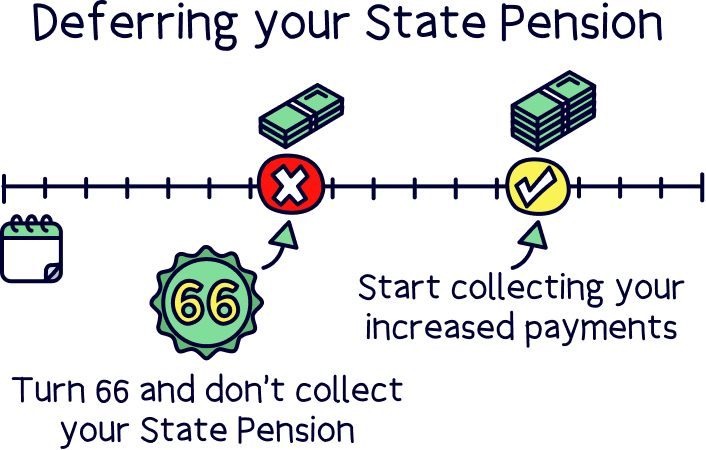
Just make sure that you don’t put off taking your State Pension for too many years. After all, you want to have a chance to enjoy it before you pop your clogs (sorry to put a downer on things!). Check out our article on what happens to your pension when you die to learn more.
Finally, if you’ve been wondering how the hell you’re going to live off just your State Pension during retirement, we have some news: you don’t have to!
While it’s great to try and maximise the State Pension you’re entitled to, it’s never going to be a huge amount of money. So, it’s worth topping it up with other forms of income. That can include things like a part-time job, renting out a property, selling your home… but one of the best ways you can top it up is with income from other pensions.
That’s right, there’s no limit to how many pensions you can have alongside your State Pension – whether we’re talking workplace pensions (ones that are set up for you by your employer) or personal pensions (ones you set up yourself).
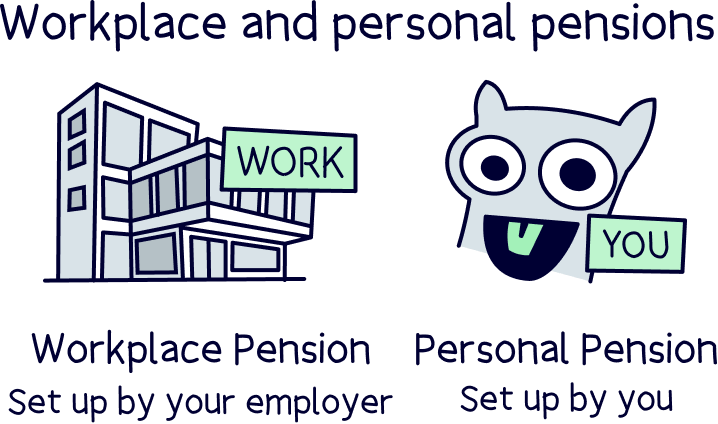
If you’re looking to boost your income in retirement and you haven’t yet got a personal pension, we’d 100% recommend setting one up. Why? Well, because they’re quick and easy to start and they’re specially designed to help you save for retirement.
Personal pensions work a bit like a piggybank – you pay into them throughout your working life, and then once you hit a certain age (normally 55), you can start withdrawing your savings. Oh, except they’re WAY better than piggybanks, because you don’t have to pay any tax on the earnings (like your salary) that you pay into your pension, and your savings will also grow while they’re sat in your pension pot without you having to do a thing.
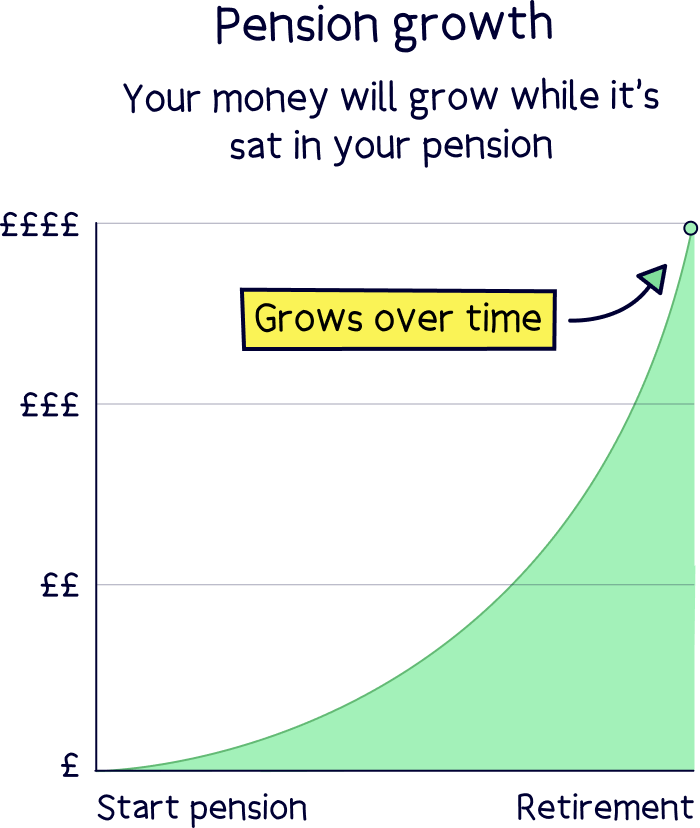
That’s thanks to the fact that the company looking after your pension (known as your pension provider) will invest your money – meaning they’ll use it to buy things like stocks and shares (where you own a tiny portion of a company). The idea is that when the company increases in value, so do your savings, making you even more money in the long run!
Better yet, personal pensions have huge tax benefits. First, everything you save within a pension is completely free of tax when it grows! So you won’t pay things like Capital Gains Tax or Income Tax.
And more still, you’ll benefit from ‘tax relief’ on your contributions. So, everytime you add money into a personal pension, you’ll get a 25% bonus from the government. How good is that?!
That’s simply the tax you have paid on your income, refunded back into your pension – as saving for a pension is intended to be tax-free.
In other words, personal pensions are a GREAT way to take control of saving for your golden years. By squirreling money away into one of these throughout your working life, you’ll be able to make sure you’re as financially secure as possible later on, and then any State Pension you receive each week you can just see as a very lovely bonus!
If you’re an employee, the chances are you have a workplace pension – that’s one set up for you by your employer. You’ll have to pay into it every month (at least 5% of your monthly earnings). But the really good news is that your employer will have to contribute to it too (at least 3% of your monthly earnings, from their own pocket). Kerching!
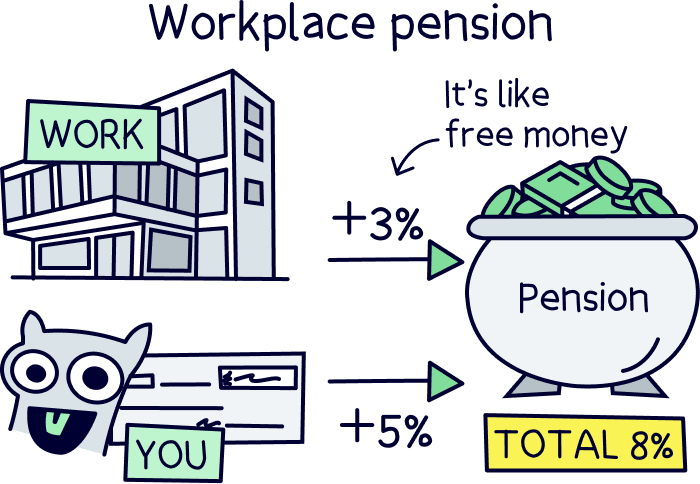
So, what happens if you want to top up your workplace pension?
Well, you have two options:
So, which is best?
Well, we’d normally recommend starting a personal pension alongside your workplace pension, and using that to top up your pension income in retirement. Why?
Because when you have a personal pension, you get to choose your own pension provider (remember, that’s the company that looks after your pension for you) – unlike with a workplace pension, where your employer will choose your pension provider for you. Being able to choose your own pension provider means you’ll normally be able to find a provider with cheaper fees. And it also means you can choose a provider that has a good track record for growing your money.
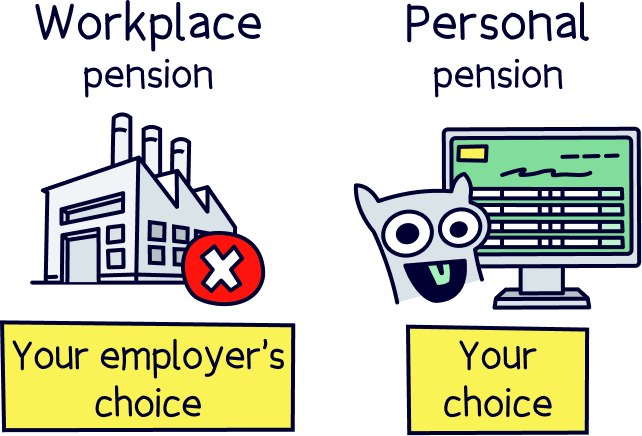
Remember how we said that pension providers spend time trying to grow your savings by investing them for you (using your money to buy things like stocks and shares, which means you’ll own a tiny portion of a company)? Well, both workplace pension providers and personal pension providers do this – the idea is that as your investments increase in value, so do your savings, meaning you’ll have more money to live off in retirement than what you paid into your pension in the first place.
There’s just one thing – some pension providers are better at it than others! By paying any extra savings you have into a personal pension where you get to choose your provider, you can make sure your money is being looked after by a team of people who are super skilled at growing money, hopefully giving you more to live off in your golden years!
Oh, except there’s an exception.
A few very lucky people have a super lovely employer who’ll agree to increase their employer contributions above the minimum 3% if you increase your contributions too. In other words, if you pay more into your pension than the mandatory 5% of your earnings, your employer will pay in more from their own pocket. Nice!
If you’re one of these jammy people, you’ll probably want to increase your workplace pension contributions if you have spare cash handy, rather than investing those extra savings in a personal pension. That way, you can unlock as much free money from your employer as possible!
To up your pension contributions, simply speak to your employer who’ll be able to sort it for you – just bear in mind you’ll have to up your contributions every month, rather than just adding one-off lump sums.
It’s also important to note that most employers who offer this will put a limit on how much they’ll be willing to contribute to your pension. So, if you still have savings to spare once you’ve unlocked the maximum contribution from your employer, you could always set up a personal pension as well. That way, you get the best of both worlds!
Want to top up your State Pension or your workplace pension? If you’ve learned anything from this article so far, it’s probably that starting a personal pension is the way to go!
But how do you actually go about starting one, to top up your retirement savings? Well, it’s really quick and easy. Just follow these simple steps.
Let’s run through the personal pension benefits quickly.
First everything you save within a personal pension is completely tax-free! So you won’t pay any tax as your money grows (your money will be invested in investment funds by experts with the view to grow safely over time). This can make a big difference to how fast your pension grows.
And second, when you make contributions into your personal pension, the government will automatically add 25% completely free. Yep, we’re not joking!
And if you’re a higher rate or additional rate taxpayer, you can also claim some tax you pay at either of those rates too (40% and 45%).
But how do you actually go about starting one, to top up your retirement savings? Well, it’s really quick and easy. Just follow these simple steps.
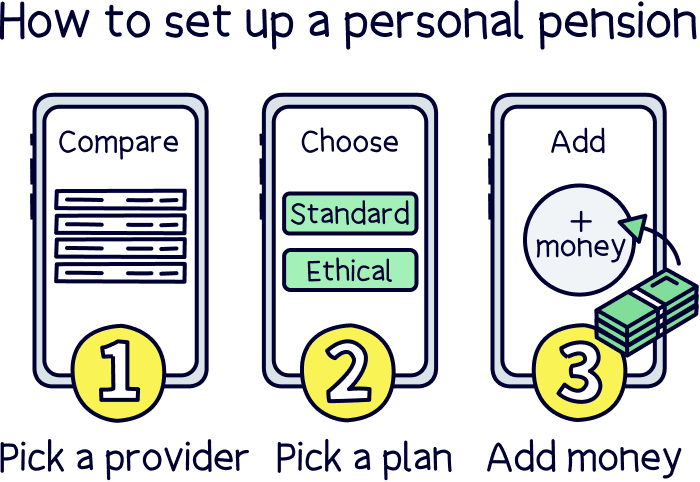
To start with, you’ll need to pick out one of those wonderful personal pension providers we’ve been telling you about. Remember to choose one that has cheap fees and a great track record for growing pension savings – that way, fingers crossed, you’ll end up with even more money to enjoy in your golden years!
Not sure where to start? To make things easy for you, we’ve picked out a selection of the best private pension providers.
A couple that deserve a special shoutout are PensionBee and Beach¹. If you’re looking for something super simple, you’ll love PensionBee. You don’t need to know anything about pensions as their handy app guides you through the whole process from start to finish. Plus, PensionBee has lovely low fees, great customer service and is really quick to set up!
Beach¹ is also really great, they don’t just cater for pensions, they have an easy access account too (a tax-free ISA), plus the app is easy to use and the customer service is excellent.
Find the best personal pension for you – you could be £1,000s better off.
Get £50 added to your pension



PensionBee is our recommended provider – they’ve thought of everything.
Their 5 star rated app (and website) makes it easy to set up and use. You can open a brand new pension, or transfer your existing pensions across (they’ll handle all the paperwork).
Simply pick from an easy to understand range of pension plans, and that’s it, the experts manage everything from there.
It’s low cost, with one simple annual fee. The customer service is excellent, and you’ll get a dedicated account manager for any questions you might have.

And, when the time comes to retire, withdrawing from your pension is easy too.
You can also use them if you're self-employed or a company director.
Great app



A great and easy to use pension. Add money from your bank or combine old pensions into one, (they’ll find lost pensions too).
The customer service is excellent, with support based in the UK.

Beach is an easy to use pension app (and easy to set up), where you just add money and the experts handle everything. It’s all managed on your phone with a great app, and you can see your total pension pot whenever you like.
If you’ve got lost or old pensions, Beach can also find them and move them over too, so you can keep all your retirement savings in one place, and never have to worry about losing them in future.
You’ll get an automatic 25% bonus on the money you add to your pension pot from your bank account (tax relief from the government), which refunds 20% tax on your income, and if you pay 40% or 45% tax, you’ll typically be able to claim the extra back too.
The pension plan (investments) are managed by experts, who are the largest investment company in the world (BlackRock). And they consider things like reducing climate change, meaning your savings could make the world a little better in future too.
You can also save and invest alongside your pension with an easy access pot (access money in around a week), designed for general savings, with the investments managed sensibly by experts too. And money made can be tax-free within an ISA.
Fees: a simple annual fee of up to 0.73% (minimum £3.99 per month).
Minimum deposit: £25
Customer service: excellent
Pros:
Cons:
Find the best personal pension for you – you could be £1,000s better off.
Now you’ve chosen a pension provider, you’ll need to decide on a pension plan – that’s basically just deciding how you want your pension provider to look after your money, and what you’ll pay for the pleasure (most pension providers will have a few plans to choose from).
Don’t worry, it’s not as scary as it sounds! Your pension provider will help you to make the right decision for you by asking you a few questions about things like your age and when you hope to retire.
That said, some of our favourite personal pension providers will have a few more jazzy options, like plans where your savings will only get invested in ethical or socially responsible companies. As you can imagine, we’re big fans of these – who wouldn’t want to save the planet at the same time as saving for retirement?!
Finally, there’s just one thing left to do – start adding money into your new personal pension, to top up your State Pension or the savings you’ve already squirreled away in a workplace pension. Simple!
Some personal pension providers will ask you to pay a minimum sum of money into your pension each month. But most are super flexible. In other words, you can set up a regular monthly payment or just chuck some cash in there whenever you have some spare – it’s up to you! (although of course, the more you add, the more you’ll have to live off when you’re older.)
Already got a personal pension? Well done you! The chances are you’re already enjoying lovely low fees and fast pension growth building up a nice and juicy retirement income. But there’s something else you’ll also get to enjoy – super easy pension top up!
That’s right, topping up your personal pension is oh-so-easy – especially if you’ve chosen a modern pension provider that gives you access to an online account or handy mobile app. You can literally just log in and add more money to your pension pot. In fact, it can take as little as 30 seconds! (okay, okay, we didn’t time it. But it’s really, really fast!)
As we’ve already mentioned, there are a few personal pension providers who’ll want you to pay a set amount into your pension each month. But most will let you pay in as much or as little as you like.
Fancy just adding in an extra tenner? That’s fine – every little helps. Want to top up your pension by a few hundred pounds each month? Go for it!
Of course, the more you can pay into your pension, the more likely you are to be financially secure later on in life. But it’s also important to make sure you’re not contributing more than you can afford – remember, you won’t be able to withdraw your pension before 55 (unless you want to face VERY hefty fees and taxes). So, it’s important to make sure you leave yourself enough money to live comfortably now, as well as later.
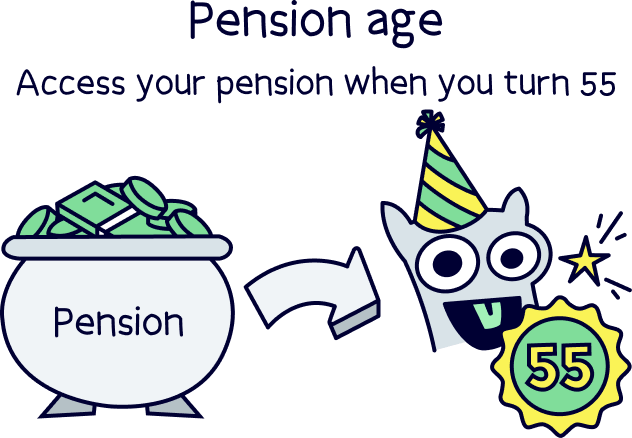
Ultimately, we’d just recommend paying in as much as you can comfortably afford to – the key is starting early and paying in regularly. That way, you’ll give your savings the best possible chance of growing a decent amount over the course of your working life, so you can enjoy your sunset years to the fullest.
Ready and raring to top up your pension? If you have extra savings you can squirrel away ready for retirement, starting a personal pension is a super sensible step. Not only will you get all the usual benefits that you’ll normally get with pensions (like not having to pay any tax on the earnings you contribute) – but you’ll also be able to benefit from cheap fees and choosing a pension provider that has an excellent track record for growing savings quickly. Get in!
Luckily, starting a personal pension is really quick and easy. If you’re not sure where to start, check out our pick of the best personal pensions. Then, once you’ve picked your favourite and got yourself set up, you can give yourself a pat on the back – all that’s left is to start saving!
If you’re not quite sure which provider to pick, we recommend using PensionBee. It’s simple and easy to use, plus it’s all managed on your phone via an app, and great fees! They’ve also got retirement planning tools to help you with your retirement goals. There’s also Beach¹ who can handle all of your savings, not just pensions.
Once you’re all set up with a personal pension, consider setting up regular payments each month, which makes topping up your pension super easy. And maybe on special occasions make one off payments too.
You’ll be cruising round the Caribbean with a mojito in your hand before you know it (or, maybe a bit more realistically, living a lovely comfortable life with exactly what you need). Enjoy!
Find the best personal pension for you – you could be £1,000s better off.
Find the best personal pension for you – you could be £1,000s better off.
We’d love to hear from you, and it will help others too.
Find the best personal pension for you – you could be £1,000s better off.